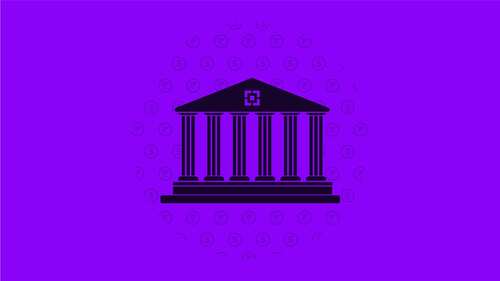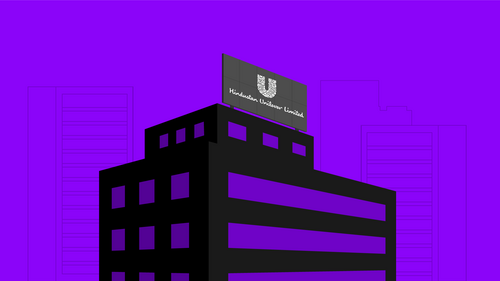Indians consume 7.3 billion idlis in a year. That's ~600 million idlis every month. And, ~20 million idlis every single day![1]
That makes up an INR 4000 crore idli-dosa batter market in India![2]
Now, 2 decades ago, this market was dominated by thousands of local, small-scale businesses, mostly run by women, who'd sell their homemade idli-dosa batter in plastic bags.
Our story's protagonist was determined to change that. A son of a daily wage worker, PC Musthafa, joined forces with his four cousins to add some much-needed order to the batter industry.
Launched with a small investment of INR 50,000 and a 50 sq ft kitchen, the team of iD fresh scaled their startup from ZERO to a valuation of INR 2000 crore[3], while generating a revenue of INR 411 crore in FY22![4]
Here's the story of how iD fresh foods became the Idli King and went from selling 100 idlis a day to 1 million!
iD’s founding journey - Never miss an opportunity!
From school dropout at 10 to an IIM MBA
PC Musthafa hailed from a small village in Kerala. His father was a coolie (laborer) on a coffee plantation and his mother a homemaker. Coming from a financially challenged background, Musthafa had a very difficult childhood.
He would walk 6 km to school, rarely could afford to have 3 meals a day and on top of this, helped his father at the farm at the mere age of 10, for a daily wage of Rs 10.
At one point, he even dropped out of school after failing his 6th standard exams. Encouraged by his teacher, he later joined back his school with a determination to do well and create a better future for himself & his family.
Eventually, he studied Computer Science at NIT Calicut, a premier engineering institute in India, and went on to do his MBA at IIM Bangalore, one of India’s top business schools. Soon enough, Musthafa was working at reputed MNCs with his work spanning across India, Europe and the Middle East and was making a good living.
The seeds of entrepreneurship
Throughout his childhood, in spite of tough conditions, Musthafa had a very strong entrepreneurial spirit. He started his first profitable venture, a makeshift Kirana shop, at the age of 10.
Later in his early 20s, he started an online used car showroom. It did well in the beginning, but within 3 years they had to shut it down.
A few years later, given his tech background, Musthafa wanted to create a chat app so he could talk to his family and friends in India while he was in the Middle East. He had the prototype ready, but he gave up midway.
After years, when Musthafa came across WhatsApp, he realized that his prototype had all the same features as this app which was eventually acquired by Facebook for $19 billion dollars. That’s the cost of missing an opportunity and not doing the right thing at the right time!
So, in early 2005, when Musthafa’s cousins approached him to help them with their small idli batter business, the opportunity was too BIG (INR 2000 crores worth) to miss!
In hindsight, the fact that Musthafa could pull off running a Kirana store at just 10, says a lot about his entrepreneurial abilities. But, more importantly, it shows his “go-getter” attitude that aided him on his journey with iD.
- As a startup founder "shamelessness" is a super important skill. In fact, early on, it can be a BIG superpower.
- DON'T build startups based on popular trends. Build one that solves real customer problems.
India’s resistance to packaged foods
iD started out in a small 50 sq ft kitchen with just 5 members (Musthafa and his four cousins) selling idli-dosa batter in plastic bags secured with a simple elastic band. The early investment was ~INR 50,000. So, clearly, the whole operation was less than sophisticated.
But, there was more than one problem plaguing iD's initial growth. Let's explore them one by one.
Problem 1 — Hygiene
The biggest problem that would really hurt a ready-to-make fresh food brand is definitely poor hygiene. The initial setup was vulnerable to bug infestations. In fact, there were some customer complaints about cockroaches. The simple plastic bag with an elastic band also had a high chance of spillage.
Problem 2 — Indians HATE packaged food
At the time in 2005, when iD was born, India's largely conservative population had a less than favourable impression of packaged foods. These households were accustomed to cooking fresh food at home. That means whipping up overnight idli batters almost every single day. So, there had to be a major shift in consumer sentiment, if these people were to use a packaged food brand.
Problem 3 — Preservatives are a BIG NO!
One of the major reasons why people don't trust packaged products is that they usually include preservatives. Now, it makes sense for a consumer brand to add preservatives to its food products to increase its shelf life. But, adding preservatives to fermented batters that most households can quickly whip up overnight was a BIG NO. Especially, in a country like India!
Problem 4 — Keeping food fresh
Finally, if iD were to skip preservatives and decide to sell all food completely fresh, the major challenge would be to make sure that every package remains fresh till it reaches the customer. That's a massive task, especially, in high humidity tropical weather where fermented products don't last very long outside of a refrigerator.
More or less, Indians didn't trust packaged food. So, for iD to gain their customers' trust they had to deliver quality products every single time!
How did iD convince people to buy their batter?
So, Musthafa and the iD team got working to fix all these issues one by one!
Solution 1 — Skip preservatives
The preservatives problem was a no-brainer. If iD was to replace a homemade staple they had to match the quality of the homemade batter on all measures. So, they made sure their batter and all other products were completely preservative-free.
Solution 2 — Fix packaging
Creating proper packages to hold the batter was super important to address both the hygiene issue and to make sure the food stays fresh. So, instead of relying on their vendor, the team took it on themselves to experiment with packages and pick the one that protects the batter plus ensures the durability of the product during transportation.
Solution 3 — Ace supply chain
Finally, after perfecting the packaging and the product, the next step was to perfect their supply chain. Here's how the operations worked. Every morning iD would supply their packets to retail stores who would then sell them to the customers. They had a system to calculate the number of packages that could be sold in a couple of days and they would only produce that number of packages.
The end goal was to make sure that they only sell freshly produced products and not have these packets sit in their inventory for weeks. They also made sure to only sell to retailers who have a proper refrigerator that is kept on 24/7, to avoid any accidents.
Solving these core issues really helped enforce trust for the brand among the customers. As the years went by, the city demography also shifted more towards the millennial population with disposable income. This shift helped them scale further.
But, in the end, their impeccable implementation is what helped them most. And once the product was a HIT, the word quickly spread!
We can learn a few things here:
- Startups are built by doing simple and "boring" things, consistently, over long periods of time.
- Never outsource anything that should be a core competency of your startup.
- The best marketing for your startup is done by your customers.
Building an INR 400+ crore business selling idlis!
iD is one of the few consumer product companies that grew organically without spending heavily on TV ads. In fact, they didn’t spend any money on marketing for the first 8 years.
All their individual products are profitable which is one of the reasons for their steady rise. But, it was not all easy sailing for the company.
When iD tried to expand its roots into Chennai, its idli batter product couldn’t survive in the already thriving and competitive market. So, in order to make a mark, iD decided to diversify its products.
It sold parathas (another household item that requires preparation) and dairy products like paneer and curd which had a high failure rate in Indian households.
They also spent a lot of money to expand to overseas markets. This diversification and expansion strategy definitely paid off. Today, iD makes a sizable share of its money selling parathas and its a sizeable revenue share comes from Dubai!
Discovering competitors for your startup idea is NOT a source of sadness, but a validation of the market.
What’s more incredible is their rags-to-riches journey.
Maintaining the product quality of perishable foods in a 50 sq ft kitchen is itself a huge task. Now scaling it to produce millions of idlis daily is something else.
The most satisfactory bit is the fact that Musthafa went from struggling to get breakfast every day, to feeding breakfast to millions of Indians. And, for that they deserve all the praise coming their way!
All startups don't have to become unicorns. Buildd something that can give you the lifestyle you desire and the happiness you seek.
.jpg)






.png)